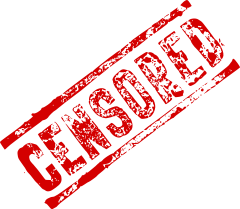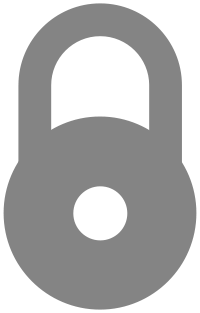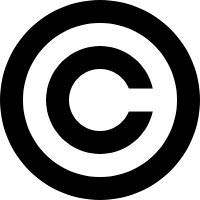Does New Legislation Aimed at Reducing Online Intellectual Property Infringement Go Too Far?
November 14, 2011
 Two related bills aimed at curbing rampant copyright and trademark infringement on the Internet are currently pending before the House and Senate. While the bills have been endorsed by the RIAA and MPAA and have strong bipartisan support in Congress, they have come under fire by mainstream media and civil liberties groups who believe the bills would shift too much responsibility onto ISPs, advertisers, and payment processors while also giving the U.S. government and trademark and copyright holders too much power to block allegedly infringing websites without sufficient due process. The Senate PROTECT IP Act of 2011 (S.968) The bills began in the Senate, where Senator Patrick Leahy (D-VT) introduced the Preventing Real Online Threats to Economic Creativity and Theft of Intellectual Property Act,” or the PROTECT IP Act (“PIPA”) in May of 2011 (S.968). The PROTECT IP Act would establish a system where the Justice Department could take down websites dedicated to copyright-infringing or counterfeit activities, including sites that solely promote distribution of illegal copies, counterfeit goods, or anti-DRM technology. The Act would give the DoJ the ability to obtain court orders preventing financial transaction providers, Internet advertising services, Internet service providers, and information location tools from linking to or processing financial transactions to or from the “rogue site.” Trademark and copyright holders would also be able to apply for a court injunction against the domain name to compel financial transaction providers and Internet advertising services to stop processing transactions to and placing ads on the website, if they have been harmed by the activities of the rogue website. The PROTECT IP Act was recently reviewed by the Senate Judiciary Committee and is still pending in the Senate. The House E-PARASITE Act (H.R.3261) The “Enforcing and Protecting American Rights Against Sites Intent on Theft and Exploitation,” or E-PARASITE Act, was introduced on October 26, 2011 by Rep. Lamar Smith (R-TX) (the bill was formerly known as the Stop Online Piracy Act, or SOPA) (H.R.3261). The E-PARASITE Act would authorize the DoJ to initiate federal court procedures against criminal activities conducted on foreign infringing sites engaging in copyright infringement, counterfeit goods, or theft of trade secrets. Again, courts could issue orders to ISPs, payment network providers, search engines, and advertising services to take “technically feasible and reasonable measures” to prevent access to the rogue site. Similar to the PROTECT IP Act, trademark and copyright holders would use a process similar to the Digital Millennium Copyright Act (DMCA) to seek limited injunctive relief against the rogue site. The E-PARASITE Act was recently sent to the House Committee on the Judiciary where it was referred to the Subcommittee on Intellectual Property, Competition and the Internet. Proponents and Critics Proponents of the bills, including the Recording Industry Association of America (RIAA) and the Motion Picture Association of America (MPAA), maintain that the legislation is vital in order to address the widespread copyright and trademark infringement on the Internet. See, for example:
Two related bills aimed at curbing rampant copyright and trademark infringement on the Internet are currently pending before the House and Senate. While the bills have been endorsed by the RIAA and MPAA and have strong bipartisan support in Congress, they have come under fire by mainstream media and civil liberties groups who believe the bills would shift too much responsibility onto ISPs, advertisers, and payment processors while also giving the U.S. government and trademark and copyright holders too much power to block allegedly infringing websites without sufficient due process. The Senate PROTECT IP Act of 2011 (S.968) The bills began in the Senate, where Senator Patrick Leahy (D-VT) introduced the Preventing Real Online Threats to Economic Creativity and Theft of Intellectual Property Act,” or the PROTECT IP Act (“PIPA”) in May of 2011 (S.968). The PROTECT IP Act would establish a system where the Justice Department could take down websites dedicated to copyright-infringing or counterfeit activities, including sites that solely promote distribution of illegal copies, counterfeit goods, or anti-DRM technology. The Act would give the DoJ the ability to obtain court orders preventing financial transaction providers, Internet advertising services, Internet service providers, and information location tools from linking to or processing financial transactions to or from the “rogue site.” Trademark and copyright holders would also be able to apply for a court injunction against the domain name to compel financial transaction providers and Internet advertising services to stop processing transactions to and placing ads on the website, if they have been harmed by the activities of the rogue website. The PROTECT IP Act was recently reviewed by the Senate Judiciary Committee and is still pending in the Senate. The House E-PARASITE Act (H.R.3261) The “Enforcing and Protecting American Rights Against Sites Intent on Theft and Exploitation,” or E-PARASITE Act, was introduced on October 26, 2011 by Rep. Lamar Smith (R-TX) (the bill was formerly known as the Stop Online Piracy Act, or SOPA) (H.R.3261). The E-PARASITE Act would authorize the DoJ to initiate federal court procedures against criminal activities conducted on foreign infringing sites engaging in copyright infringement, counterfeit goods, or theft of trade secrets. Again, courts could issue orders to ISPs, payment network providers, search engines, and advertising services to take “technically feasible and reasonable measures” to prevent access to the rogue site. Similar to the PROTECT IP Act, trademark and copyright holders would use a process similar to the Digital Millennium Copyright Act (DMCA) to seek limited injunctive relief against the rogue site. The E-PARASITE Act was recently sent to the House Committee on the Judiciary where it was referred to the Subcommittee on Intellectual Property, Competition and the Internet. Proponents and Critics Proponents of the bills, including the Recording Industry Association of America (RIAA) and the Motion Picture Association of America (MPAA), maintain that the legislation is vital in order to address the widespread copyright and trademark infringement on the Internet. See, for example:
- “RIAA chief: Copyright bills won't kill the Internet” at CNET;
- “The PROTECT IP Act : What You Need to Know” (pdf) by Creative America; and
- Fightonlinetheft.com.
There are also numerous critics of the bills who are concerned about the suppression of speech without due process and the effect of the bills on the Internet’s infrastructure, among other issues. See, for example:
- “Stop Online Piracy Act would stop online innovation” at the SF Chronicle;
- “Coming Clean on SOPA” by the Future of Music Coalition;
- “A bipartisan attempt to regulate the Internet?” at the LA Times; and
- “And Speaking of the Inalienable Right to the Pursuit of Happiness . . .” at The Volokh Conspiracy.


 The
The  Today, most universities and colleges have their own YouTube channel where they host videos about the institution, faculty, and students. These videos often let prospective students interact with the institution in ways not previously possible. While the copyright status of university-created and –uploaded videos is usually obvious, recent events have shown that any YouTube channel can fall victim to false copyright infringement claims. On August 29, 2011, numerous videos from the official YouTube channels of musicians Justin Bieber, Lady Gaga, Rihanna, and others were removed by YouTube as the result of copyright infringement claims submitted by an entity called “iLCreative.” Like most online content hosts, YouTube has
Today, most universities and colleges have their own YouTube channel where they host videos about the institution, faculty, and students. These videos often let prospective students interact with the institution in ways not previously possible. While the copyright status of university-created and –uploaded videos is usually obvious, recent events have shown that any YouTube channel can fall victim to false copyright infringement claims. On August 29, 2011, numerous videos from the official YouTube channels of musicians Justin Bieber, Lady Gaga, Rihanna, and others were removed by YouTube as the result of copyright infringement claims submitted by an entity called “iLCreative.” Like most online content hosts, YouTube has